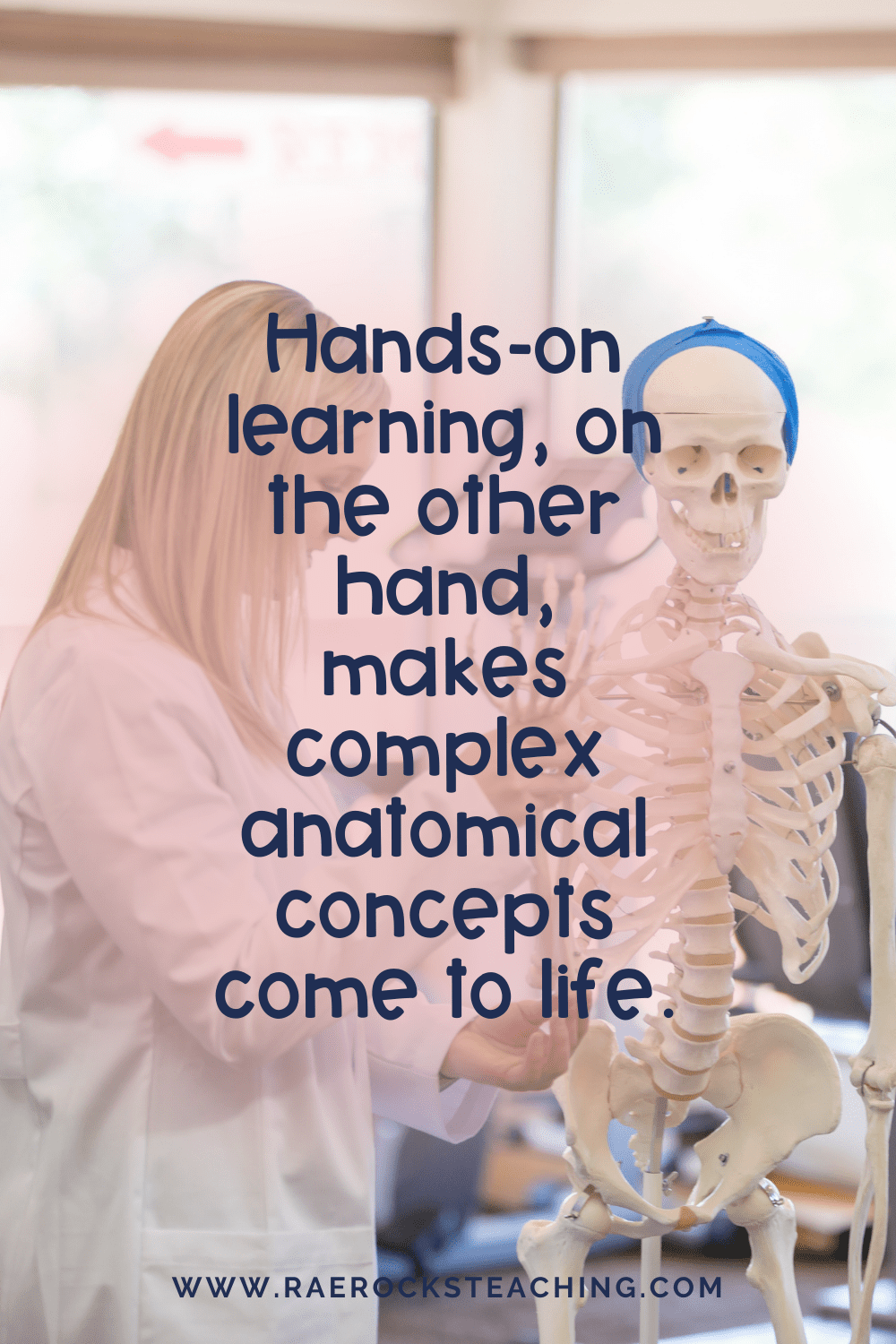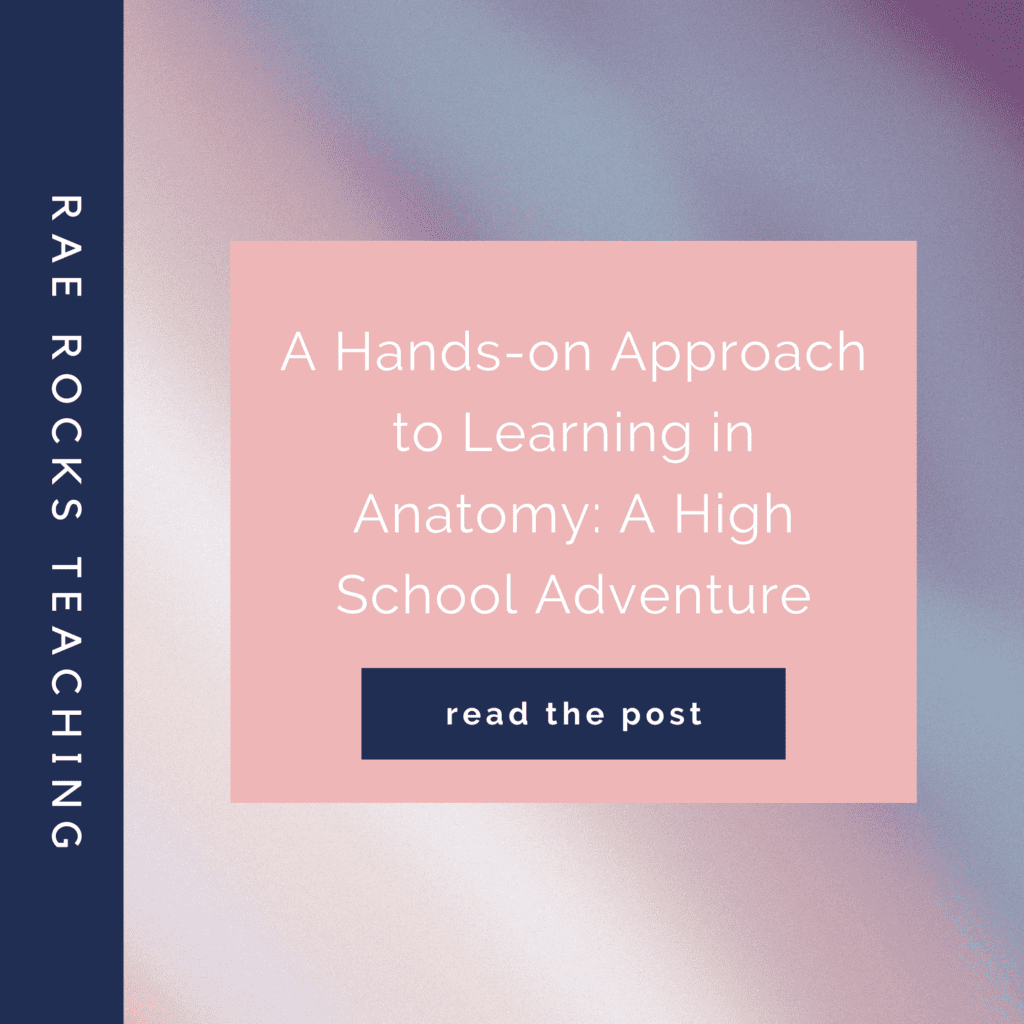Hello, teacher friends! Today, we’re diving into the world of high school anatomy education, and a hands-on approach to learning. If you’re a high school anatomy teacher, you’ll want to pay close attention because this approach can transform your classroom into an engaging and unforgettable learning experience.
Why Should You Consider A Hands-on Approach to Learning?
Before we dive into the practical aspects, let’s discuss why hands-on learning is a game-changer for teaching anatomy to high school students. Traditional methods, such as lectures and textbooks, can be dry and challenging for young minds to absorb. Hands-on learning, on the other hand, makes complex anatomical concepts come to life.

-
Save
Consider teaching the structure of the heart. While diagrams and lectures have their place, handing students a real heart model to explore can have a profound impact. They can touch, observe, and understand the intricacies of the organ in a way that no book can replicate. That’s the power of hands-on learning.
Bringing Hands-On Method of Teaching to Your Anatomy Classroom
Now that we’ve established the importance of hands-on learning, let’s explore how you can incorporate it into your high school anatomy class:
- Anatomy Models and Kits: Invest in quality anatomy models or kits that allow students to interact with various body systems. From skeletal models to organ replicas, these resources provide tactile experiences that solidify anatomical knowledge.
- Dissections: Conducting dissections, whether it’s frogs, sheep hearts, or cow eyeballs, provides a hands-on experience that high school students often find fascinating. It’s a memorable way to explore anatomy up close.
- 3D Printing: Leverage 3D printing technology to create custom anatomical models. This approach enables you to tailor your teaching materials to your specific curriculum, enhancing engagement and comprehension.
- Anatomy Projects: Encourage students to embark on their own hands-on projects. They could create anatomical board games, build organ models, or even design interactive digital presentations. This approach fosters creativity and reinforces learning.

-
Save
Maximizing Hands-On Learning Strategies in the Classroom
Now, let’s discuss some strategies to make the most of hands-on learning in your high school anatomy classroom:
- Inquiry-Based Learning: Pose questions to your students and encourage them to explore and discover answers through hands-on activities. For example, ask them to investigate the differences between skeletal muscle and smooth muscle by examining tissue samples under microscopes.
- Collaborative Learning: Create group activities that require students to collaborate and problem-solve together. For instance, have them work in teams to assemble a life-sized skeleton model. This fosters teamwork and peer learning.
- Assessment through Projects: Assess student understanding through hands-on projects and presentations. This approach allows them to apply what they’ve learned in a practical way, reinforcing their knowledge.
- Field Trips and Guest Speakers: Whenever possible, arrange field trips to medical museums, laboratories, or invite guest speakers who can share their experiences and insights. These real-world interactions can ignite students’ passion for anatomy.

-
Save
Embracing Technology as a Complement
While hands-on learning is at the forefront of effective anatomy education, don’t forget that technology can complement these experiences:
- Virtual Anatomy Software: Utilize virtual anatomy software and apps to enhance your lessons. These tools allow students to explore anatomical structures in 3D, providing an interactive and immersive learning experience.
- Online Resources: Curate a list of reputable online resources, such as anatomy video tutorials and interactive websites, to supplement hands-on activities. These resources can serve as valuable study aids for students.
As a high school anatomy teacher, you hold the key to unlocking your students’ fascination with the human body. A hands-on approach to learning isn’t just about touching and feeling; it’s about igniting curiosity and fostering a deeper understanding of anatomy. By incorporating hands-on activities, projects, and technology into your classroom, you’ll empower your students to embark on an exciting journey of discovery.
Don’t forget to grab your FREE COPY of The Ultimate Guide to Engage Students To Learn Anatomy | 7 Secrets To Implement Today

-
Save
I love sharing helpful content with y’all and would love to connect on IG or Facebook. I’m on TikTok too! Follow me and send me a DM with what you need more of because I’m here to help! If you are looking for even more inspiration, find me on Pinterest!
Wanna read more?
3 Reasons You Should Use Interactive Stations To Teach Human Anatomy Positions
5 Fun Ways to Engage Students in High School Anatomy
5 Anatomical Dissections for High School Anatomy You Need to Be Doing
Share via:









One Response